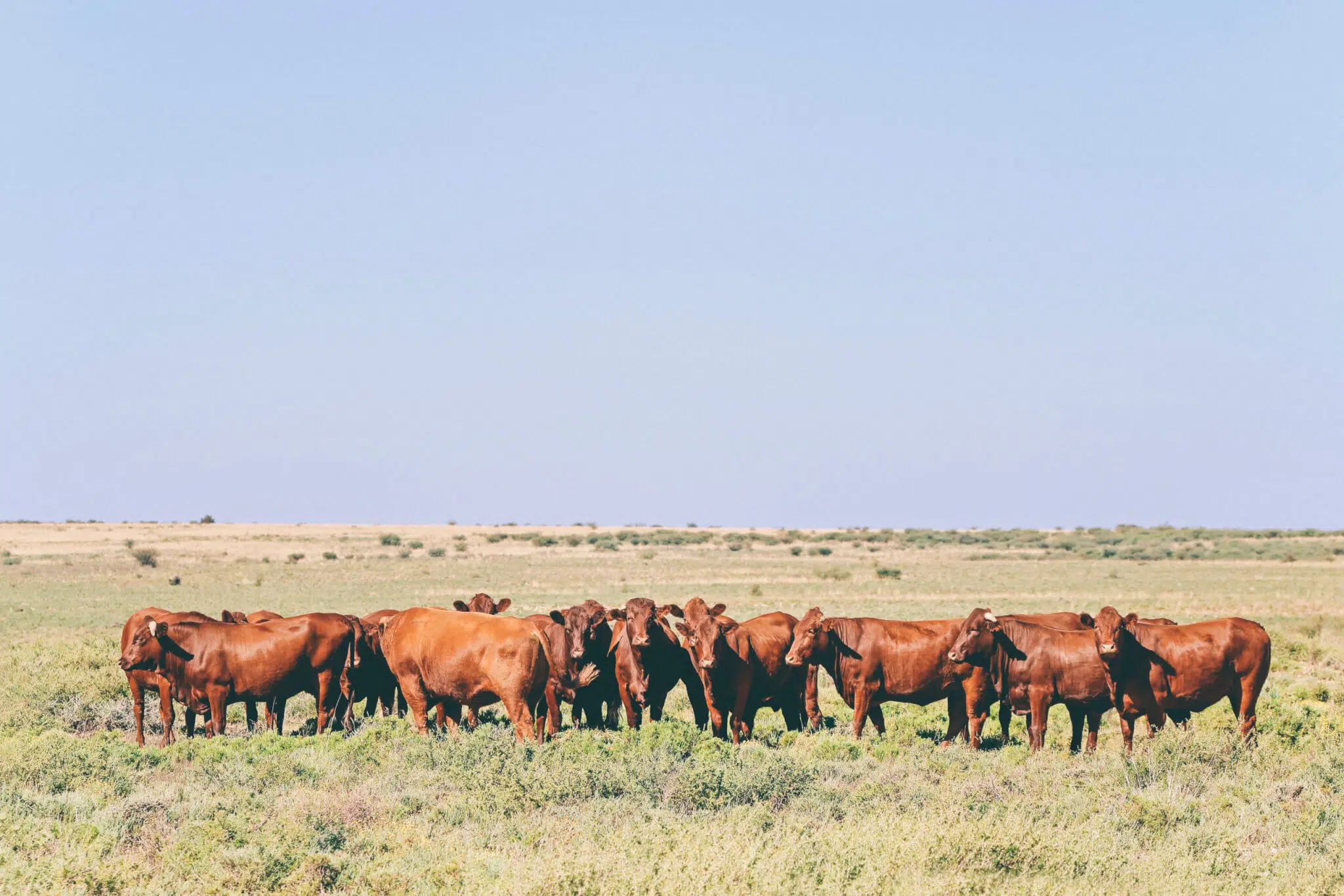Farming with breeding beef cows is a constant balancing act. You need to know what a cow needs in all stages of her reproductive cycle, what resources you have available on the veld, and the deficit that you need to make up for in supplemental feed in order to maximise health, growth efficiency, production, and profits. That is why understanding mineral nutrition on veld is so important.
When implementing a summer breeding season on-farm, there are a few things to consider regarding the feeding practices of your beef cows. Cows obtain a large proportion of their mineral requirements from the veld and the supplemental feed they consume. The microminerals that are essential for foetal growth include zinc, manganese, iron, copper, selenium, and iodine. Subsequently, these microminerals should be supplied in adequate quantities to cows during gestation.
The following interdependent factors will influence the mineral nutrition on veld, including mineral availability:
- The forage species or variety, meaning genetic influences on mineral composition (for the same species grown under different conditions).
- The type of soil, as influenced by soil pH.
- The climatic or seasonal conditions during growth, i.e. differences in wet season and dry season forages.
- Stage of maturity, as concentrations of microminerals such as zinc, copper, manganese, cobalt, molybdenum, and iron decrease with increasing plant maturity.
The veld nutrient supply changes seasonally. Nevertheless, our cows change too, and this is why the balancing act is so vital.
First trimester
During the first trimester, foetal implantation occurs, and different cell layers develop into the different bodily systems. The first trimester is where the foundation of the future calf is established as the foetus’s brain, heart, liver, and reproductive organs start to form. The placenta is the direct connection between the cow and her developing calf. It starts to grow during the first trimester and continues into the second trimester. The condition of the veld is, however, at its best during the first trimester and the need to provide nutritional supplementation during this trimester is lower. The main aim at this time is to prevent embryonic losses by avoiding stressful events such as handling and transport.
Second trimester
Muscle development begins during the second trimester. The placental development is rapid and is vital during this phase. Inadequate placental development will lead to a small placenta, which is problematic as the function of the placenta is to supply nutrients to the unborn calf and remove excretory products. If the placenta is underdeveloped, it will not be able to supply sufficient nutrients to the calf later in gestation. This will not only negatively affect foetal growth, but also the lifetime production of the animal. During the second trimester, the seasons start to change; temperatures slowly drop, and the quality and mineral content of the veld starts to decline. Nutritional supplementation is becoming increasingly important from this point onward. The third trimester is the most critical and nutritionally demanding trimester for the cow.
Third trimester
During the third trimester, the unborn calf grows rapidly and there are also important changes occurring to get the cow and calf ready for calving. The third trimester is the most critical and nutritionally demanding trimester for the cow.
During the third trimester, the cow is generally faced with three problems:
- Due to the size of the growing calf, there is less space in the abdominal cavity for the rumen, which will limit the cow’s intake.
- The calf gains more than half of its body weight during this trimester; therefore, its nutritional demands for growth on the cow are high.
- Due to the season, the veld is mature and of poor nutritional quality, leading to reduced intakes.
A delicate balance
So, on the one hand we have veld of low quality, accompanied by low intakes, and on the other hand, a cow that needs to be supplied with a good-quality nutritional supplement with all the necessary nutrients and minerals to assist with fibre digestibility and to ensure an effective immune system. Therefore, providing nutritional supplementation during the third trimester is critical.
In some situations, it is the cow and not the calf that suffers the most from nutritional deficiencies, as the developing calf has a higher priority for nutrients. It is also important to remember that once the calf is born, it is going to need a good, nutritious diet that must come from the cow. There can be serious consequences for both the cow and her calf if nutritional supplementation does not occur during the third trimester. The cow will lose body condition, which will lead to a prolonged intercalving period, affecting her lifetime reproduction and calf contribution to the herd. The calves born to underfed mothers are likely to be smaller and have underdeveloped muscles and poor immunity, negatively affecting their lifetime production potential.
The question you should ask yourself …
Have you surrendered your cows to the mercy of the veld? If this is this case, are they consuming all the minerals and nutrients they require? With the necessary supplementation, mineral nutrition on veld can be optimised – keeping cow and calf happy and healthy.
Ruminant researcher










